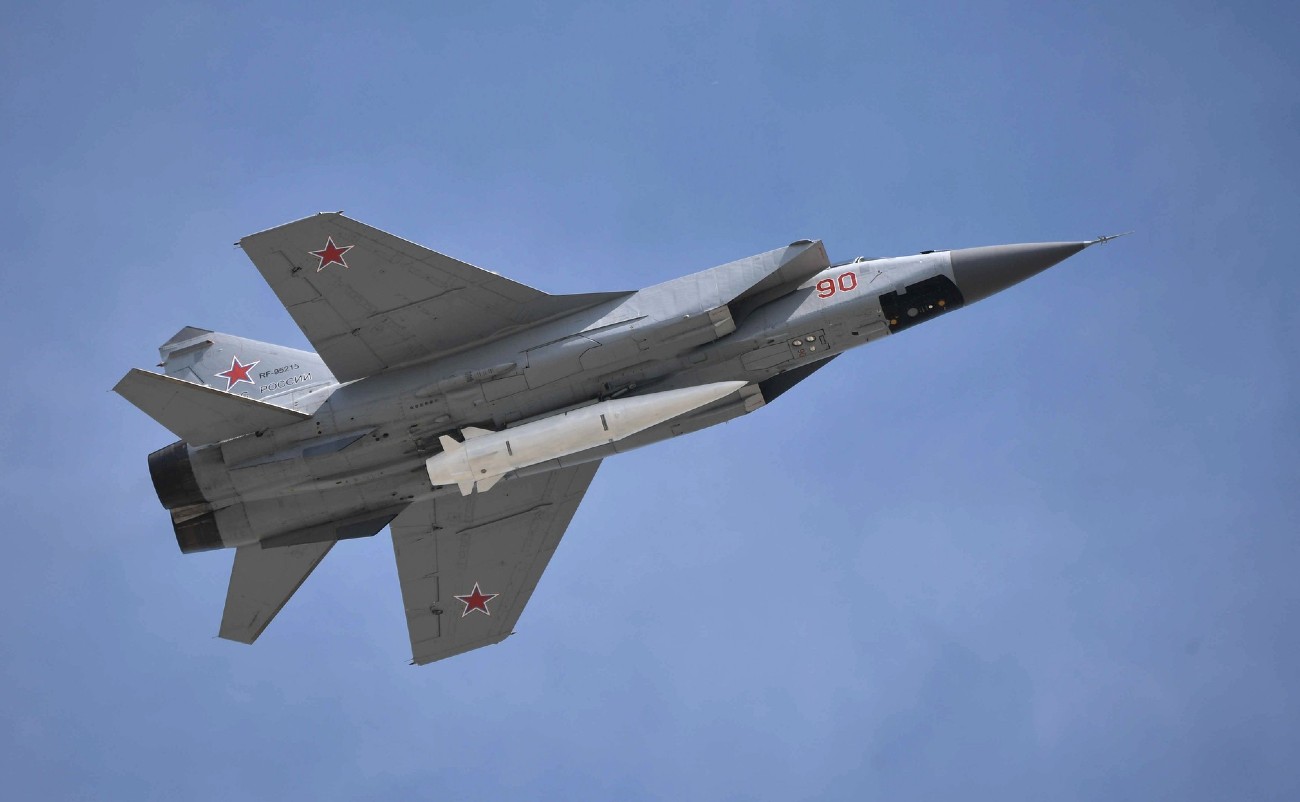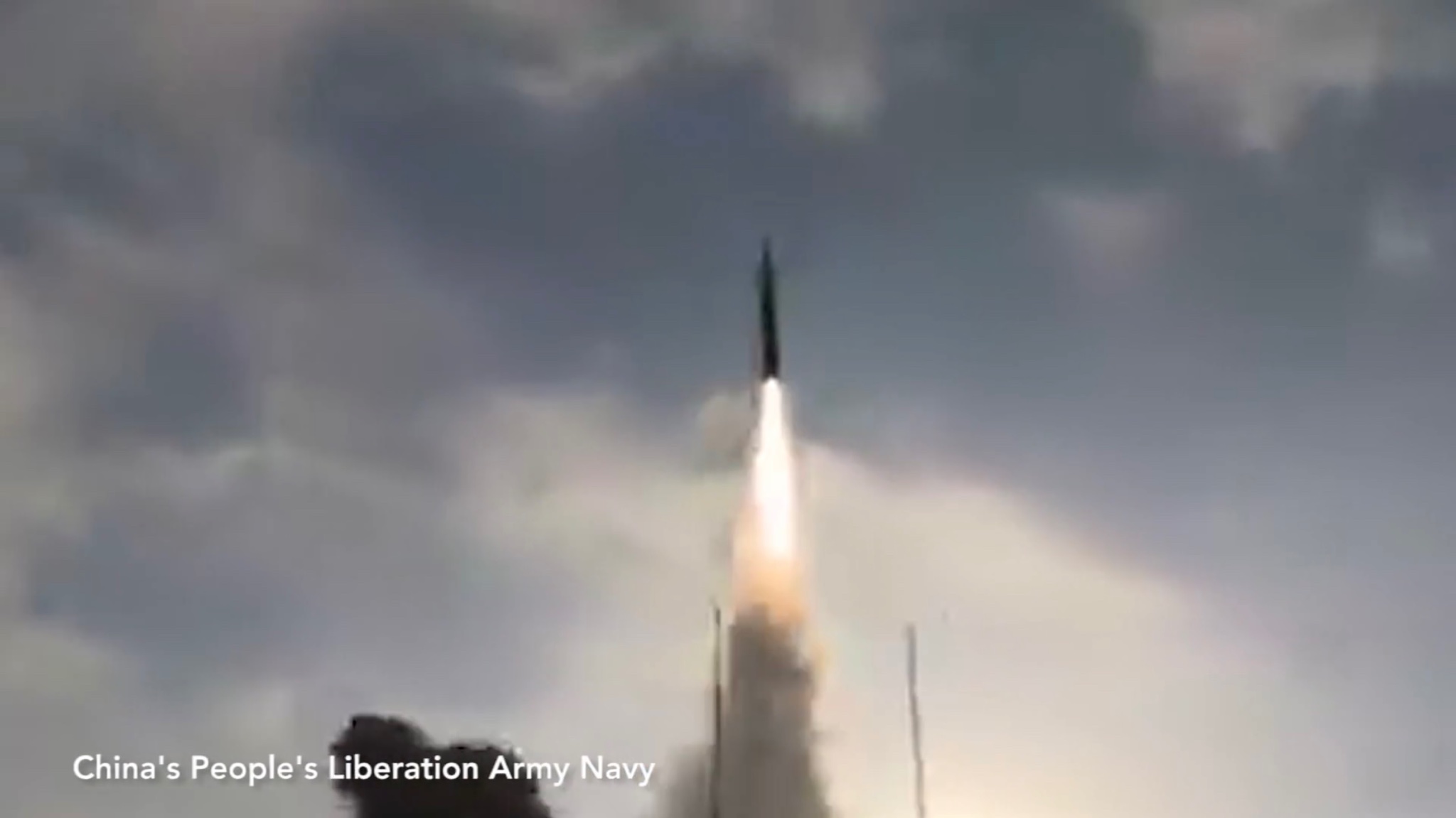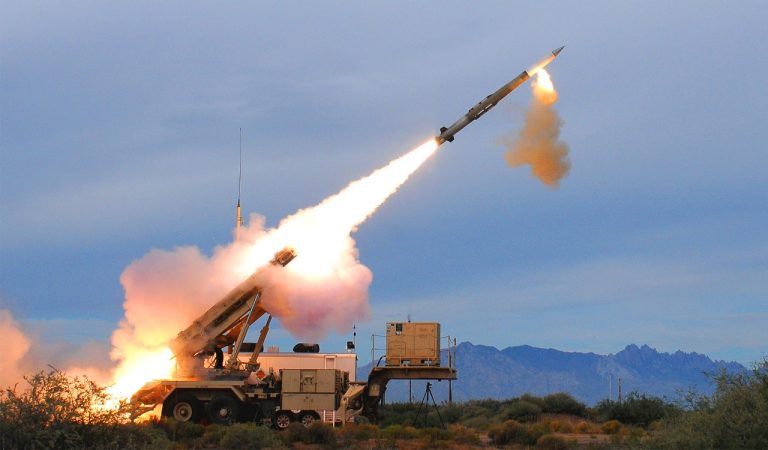The United States is mulling the deployment of Patriot interceptors to thwart a potential Chinese hypersonic missile attack.
Two unnamed senior defense officials revealed that the US Navy could equip some of its ships with Patriot interceptor missiles due to concerns that China could use hypersonic weapons to sink American ships in the Pacific, according to Reuters.
The Lockheed Martin-manufactured Patriot Advanced Capability-3 Missile Segment Enhancement (PAC-3 MSE) interceptors are mainly used by the Army in the United States. An unnamed industry official cited by the publication stated that their deployment aboard Navy ships is being contemplated due to the threat posed by China’s rapid strides in developing highly maneuverable hypersonic weapons.
The integration of the Lockheed Martin-made air defenses comes amid simmering tension in the Indo-Pacific region, specifically in the Taiwan Strait and the contested South China Sea. An escalation at either of these two hotspots could lead to a direct military confrontation between China and the United States.
Aware of these possible contingencies, the US has strengthened its defenses across the expansive Indo-Pacific region. The recent initiative, if confirmed, could be a part of that larger effort. However, the Pentagon has not taken cognizance of these reports.
Further, the potential deployment of PAC-3 MSE comes in the wake of the combat efficacy demonstrated by the Patriot missile defense system in Ukraine against the Russian hypersonic ‘Kinzhal’ missile, which Russian President Vladimir Putin previously projected as ‘invincible.’
The Patriots have reportedly downed multiple Kinzhal missiles since the missile defense batteries were handed over to Kyiv.

Hypersonic missiles are harder to intercept as they travel at least five times the speed of sound and follow an unpredictable trajectory. China, for one, has emerged as a world leader in hypersonic capabilities—resulting in a significant shift in the balance of power.
Beijing has fielded an array of hypersonic weapons—including the YJ-21—an anti-ship hypersonic missile in service with the People’s Liberation Army Navy (PLAN). The YJ-21 can be launched from Chinese destroyers like the Type 055 and the PLA Air Force’s (PLAAF) H-6 bombers.
According to experts, anti-ship missiles are key to China’s A2/AD (anti-access/area-denial) capabilities. In the event of a regional confrontation, these missiles can provide the PLA with a “home advantage” and keep adversary navies out of contested waters off the coast of China.

Top US commanders believe that China’s anti-ship hypersonic missiles are more deadly since they can hit moving targets. During the terminal phase of flight, they can hit large warships because of their dynamic maneuvering ability during re-entry.
China has indirectly boasted its hypersonic capabilities, sending a clear message to the United States. For instance, Chinese researchers asserted that a US carrier group could be “certainly” destroyed by Chinese hypersonic missiles in a paper published in a Chinese journal in May 2023.
Additionally, several pieces of literature and special media propaganda posts have been published stating that Chinese hypersonic weapons can penetrate the most advanced air defense systems in the world.
Besides the road-mobile DF-17 and the YJ-21 anti-ship missiles, China has now developed a very long-range missile called ‘DF-27’ that can fly as far as Hawaii and strike US aircraft carriers.

Patriots Against Hypersonic Missiles
While the US does not currently have any credible defense against hypersonic missiles, it is working on the development of the Glide Phase Interceptor (GPI) missile in collaboration with Japan. The GPI has been envisioned as a cutting-edge interceptor that would take down the hypersonic missile in its glide phase.
Currently, it is not known whether the deployment of Patriot interceptors aboard ships is an interim measure until the US fields potent hypersonic missile interceptors.
The Patriot Advanced Capability 3 (PAC-3) Missile Segment Enhancement (MSE) is a high-velocity hit-to-kill, surface-to-air missile that can intercept unmanned aerial systems, cruise missiles, air-breathing threats, and tactical ballistic missiles.
The US Navy believes integrating Patriot interceptors might add another high-probability layer that has yet to be tested against hypersonic weapons. The US Navy told Reuters that ”more testing is required in the development roadmap that will include launching PAC-3 MSE from a ship and validating communication with the SPY-1 radar,” the main sensor in the Aegis missile system.
The Aegis missile system is an integrated naval weapons system that tracks and directs weapons to attack enemy targets using radars and computers. It is used aboard Arleigh-Burke class destroyers, Ticonderoga-class Cruisers, and Constellation-class frigates.
The Reuters report further stated that the PAC-3 has a shorter range than other anti-ship cruise missiles like the SM-6. However, a missile defense program director with direct knowledge of the Aegis system told the publication, “Steering rockets near the nose make it more agile, and destruction of the threat is more likely because of its “hit to kill” concept, in which the interceptor strikes the target rather than explode near it, said a missile defense program director with direct knowledge of the Aegis system.”
When confronted with cutting-edge Chinese weapons, such as hypersonic glide vehicle warheads, those capabilities “supplement the existing missiles on a US ship very well” by making it easier to shoot and destroy fast-moving, high-speed ballistic missiles, according to the program director.

Moreover, a Patriot missile system’s PAC-3 interceptor, which the US Army and its allies mostly use for air defense on land, was tested on a “virtual Aegis ship” in May 2024, utilizing a Mk. 70 vertical launcher.
However, it has not yet been installed on a navy vessel. At the time, Tom Copeman, Lockheed Martin’s strategy and naval programs vice president and a former surface warfare officer, said in a statement: “These systems could deliver a proven, Integrated Air and Missile Defense (IAMD) capability with growing capacity to the US to help defend against advanced, maneuverable threats.”
Moreover, Lockheed Martin also said that it “validated” the PAC-3 MSE’s communication capabilities with an AN/SPY-1-series radar via Aegis in June 2023. This essentially indicates that the PAC-3 MSE would greatly bolster the defense of US Navy vessels when it is finally integrated.
While it is unclear how many of these interceptors the US Navy would need, the demand for the missile has been skyrocketing recently. The United States has tapped Japan, a crucial ally, as a site for joint production of the missiles, and the Pentagon is reportedly working with all stakeholders to increase production.
- Contact the author at sakshi.tiwari9555 (at) gmail.com
- Follow EurAsian Times on Google News




